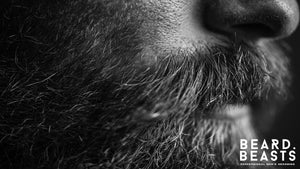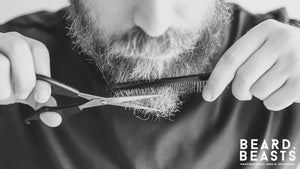How to Make Homemade Beard Butter: Easy DIY Recipes 2025
Homemade beard butter puts you in control of what touches your beard and skin. You’re not relying on mass-produced blends with vague claims—you’re choosing ingredients that serve a clear purpose for your beard and skin.
It’s built around function. You get deep hydration, long-lasting softness, and light hold without the heaviness of bloated formulas or the guesswork of generic formulas.
The process is simple, but the result is tailored to your beard’s needs. You end up with a beard butter that works with your texture, fits your routine, and delivers results that show.
This isn’t just a DIY project. It’s a smarter way to take ownership of what goes into your beard—every day.
Why Make Your Own Homemade Beard Butter?

Most store-bought beard butters are designed for mass appeal, not for your beard’s specific needs. Many often rely on cheap fillers and synthetic additives that don’t give lasting results.
When you make your own homemade beard butter, you choose the oils, butters, and scents that work best for you. It’s a custom formula built for your beard’s texture, your skin type, and the way you groom.
There’s no uncertainty in the formula. You know what each ingredient brings to the table—and how it benefits your beard and skin.
This level of control matters. It means better hydration, cleaner absorption, and a beard butter that supports your beard’s natural structure instead of fighting it.
DIY also lets you adapt. Whether your beard is thick or fine, dry or oily, you can adjust your recipe until it fits—without paying for something that doesn’t.
Must-Have Ingredients for DIY Beard Butter
A strong beard butter starts with the right blend. Each ingredient should serve a purpose—hydration, nourishment, protection, or control. Below is a proven ratio and smart substitutions to fit your beard’s texture and needs.

Shea Butter – 50% of your blend
This is the base of your beard butter. Shea butter is rich in vitamins A and E, and deeply hydrates coarse beards while softening the skin beneath. It creates a thick, spreadable texture that holds its form without feeling greasy.
Alternatives:
-
Mango butter – lighter feel, absorbs quickly
-
Cocoa butter – firmer texture, adds body to the blend
Carrier Oils – 30% of your blend
Carrier oils keep your beard soft, manageable, and nourished. They absorb into the hair and skin to reduce dryness and improve feel.
Recommended options:
-
Jojoba oil – balances oil production, non-greasy
-
Coconut oil – rich and protective, great for dry beards
-
Sweet almond oil – lightweight and smooth
-
Argan oil – softens and adds shine without buildup
Blending two oils is a good way to customize performance and absorption.
Beeswax – 10% of your blend (optional)
Beeswax adds light hold and structure, helping your beard maintain shape throughout the day. It also locks in moisture and gives the butter a slightly firmer finish.
Vegan alternative:
-
Candelilla wax – firmer texture, plant-based option
Skip wax entirely if you prefer a purely soft and conditioning product.
Essential Oils – 5–8 drops per ounce
Essential oils offer more than just scent—they can support skin health and add a clean, masculine finish to your butter.
Popular choices include:
-
Tea tree or eucalyptus – antibacterial, refreshing
-
Cedarwood or sandalwood – earthy, grounding scent
-
Lavender – calming and skin-soothing
Use sparingly. A few drops are enough—overuse can cause irritation.
Safety Note: Always perform a patch test before using any new essential oil on your skin. Apply a small amount of your finished beard butter to the inside of your wrist or elbow and wait 24 hours. If irritation occurs, do not use the product.
Vitamin E Oil – 1–2% of your blend
Vitamin E helps extend shelf life and protects your skin from dryness and damage. It also acts as a natural antioxidant, keeping your beard butter fresher for longer. Just a few drops per batch is all you need.
With the right ingredients in place, the next step is knowing how to bring them together.
Equipment You’ll Need
You don’t need much to make high-quality beard butter—just the basics done right.
-
Double boiler or heat-safe bowl + pot – melts ingredients gently without damaging nutrients.
-
Measuring spoons or digital scale – gives you consistent ratios every time.
-
Whisk, fork, or hand mixer – blends and smooths the mixture as it cools.
-
Storage tins or jars – airtight containers that keep your butter fresh and easy to use.
With the right tools and ingredients in place, it’s time to start crafting your own beard butter.
How to Make Homemade Beard Butter (Step-by-Step)
Once your ingredients and tools are ready, follow these steps to make an effective beard butter that works.

1. Set up a double boiler
Fill a pot with a few inches of water and place a heat-safe bowl on top. Keep the heat low—your goal is to melt, not cook.
2. Add your butters and beeswax
Place the shea, mango, or cocoa butter into the bowl, along with any beeswax if your recipe includes it. Stir occasionally until fully melted and smooth.
3. Mix in your carrier oils
Remove the bowl from heat and immediately stir in your carrier oils. This helps preserve their nutrients and keeps the blend balanced.
4. Add vitamin E and essential oils
Once the mixture has cooled slightly but is still liquid, add your vitamin E and essential oils. Stir well to distribute them evenly.
5. Let it cool and solidify
Pour the mixture into tins or jars. Let it sit uncovered at room temperature, or place it in the fridge for faster setting.
6. Whip (optional)
If you prefer a softer, whipped texture, let the butter cool slightly, then use a hand mixer for 2–3 minutes before pouring it into containers.
Once you've mastered the process, it’s easy to adjust the blend to fit your beard’s exact needs.
Below are three targeted recipes designed to give you control—whether you're dealing with dryness, thickness, or just need a reliable daily blend.
DIY Beard Butter Recipes (For Different Beard Needs)
Every beard has its own texture, thickness, and challenges. These three proven recipes are built to give you options—whether you need daily conditioning, extra moisture, or a lightweight finish.
1. Daily Use Beard Butter
Good for: Most beard types. This balanced formula provides hydration, soft texture, and subtle structure with clean absorption.
-
Shea butter – 2 tbsp
-
Jojoba oil – 0.6 tbsp
-
Coconut oil – 0.6 tbsp
-
Beeswax – 1¼ tsp (~0.4 tbsp)
-
Vitamin E oil – ⅛ tsp (or 3–5 drops)
-
Essential oil – 5–8 drops
2. Heavy-Duty Moisture Beard Butter
Good for: Thick, dry beards that need deeper hydration and longer-lasting softness.
-
Shea butter – 2 tbsp
-
Castor oil – 1 tbsp
-
Argan oil – 1 tbsp
-
Beeswax – ½ tsp
-
Vitamin E oil – 3 drops
-
Essential oil – 5–8 drops
For an even firmer finish, cocoa butter can be used in place of shea.
3. Lightweight Beard Butter
Good for: Shorter beards, oily skin, or warm climates where a lighter touch works better.
-
Shea butter – 2 tbsp
-
Sweet almond oil – 1 tbsp
-
Grapeseed oil – 1 tbsp
-
Beeswax – none
-
Vitamin E oil – 2 drops
-
Essential oil – 4–6 drops
Whether your beard needs daily care or targeted support, these blends give you control over how it looks, feels, and performs.
Tips for Customizing Your Homemade Beard Butter
These DIY beard butter recipes are reliable, but your beard isn’t generic. Use the tips below to adjust texture, feel, and performance without compromising quality.
Adjust butter-to-oil ratios for texture
Your base ratio controls how firm or soft your beard butter feels. If the final product is too dense, reduce beeswax or increase your carrier oils slightly.
If it’s too soft or melts too easily, increase the butter or cool it longer when setting. A small change in ratio can make a big difference in how the product performs.
Match your oils to your beard and skin
Not every oil works for every beard. Thicker, drier beards benefit from richer oils like castor or coconut, while fine or oily-prone beards do better with lighter options like jojoba or grapeseed.
Consider your skin underneath too—if it gets irritated or flaky, go with something calming and lightweight. Your oil choice affects not just feel, but how well the butter absorbs and performs.
Start light with essential oils
Essential oils add scent and skin benefits—but too much can overwhelm or irritate. Stick to 5–8 drops per ounce at first, then adjust after using the product a few times.
Some oils, like tea tree or eucalyptus, are stronger than others and should always be used with restraint. A subtle scent that complements your grooming routine works better than something that lingers all day.
Whip for a softer finish
Whipping adds air and changes the texture without altering the formula. If your butter feels too solid or hard to scoop, whip it just before it sets using a hand mixer or fork.
This creates a lighter, smoother finish that spreads easily through the beard. It's a small step that improves daily use and gives the butter a more refined feel.
Dialing in the right blend takes a few adjustments—but once you find it, the results speak for themselves. A well-made beard butter doesn’t just improve your routine—it makes your beard look and feel the way it should.
Final Thoughts
Homemade beard butter isn’t just about saving money—it’s about building something that works. When you build it yourself, the results reflect your standards—not someone else’s formula.
Whether you’re focused on hydration, texture, or shape, the right blend can change the way your beard feels day to day. And once you’ve made it yourself, you’ll know exactly what your beard responds to—and what it doesn’t need.
This isn’t trial and error. It’s strategy. And it puts your grooming routine where it belongs—on your terms.
Ready to use what you’ve made?
Check out our guide on how to use beard butter for clear, practical steps that get results.








